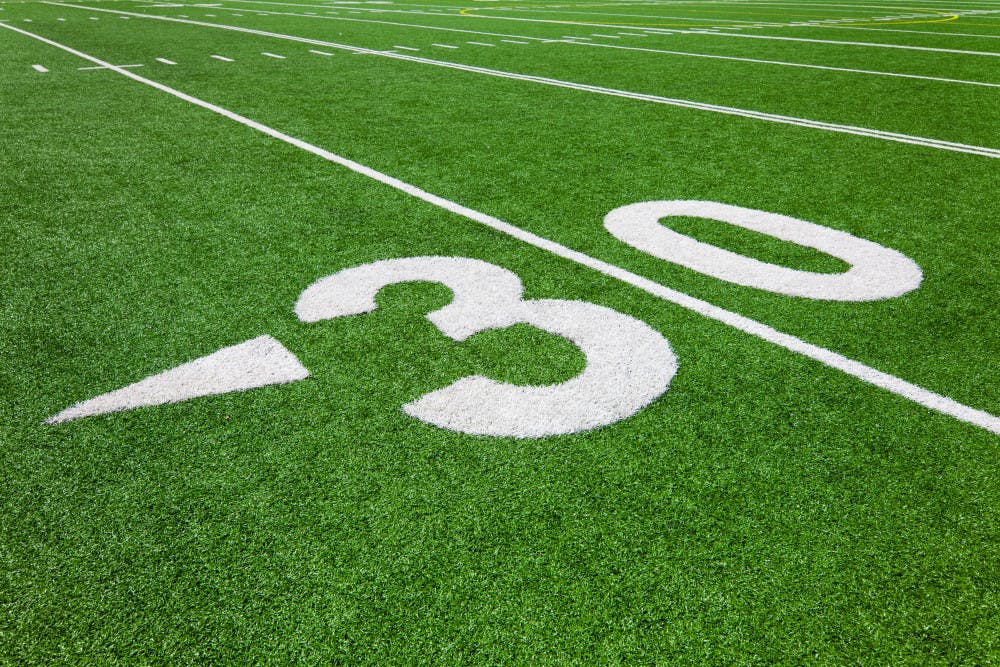By Mathias Altman-Kurosaki
Staff Writer
Normally after the Super Bowl ends, football fans have to wait months for a new season to begin. But a new era began on Saturday, Feb. 8, when the D.C. Defenders defeated the Seattle Dragons in the first week of the newly formed XFL’s season.
This year’s iteration of a new football league is the second attempt for the XFL. The league started in similar fashion in 2001, drawing high television ratings for the first week. But despite its efforts to keep fans engaged after the end of the NFL season, the XFL saw its popularity plummet and the league folded after that season.
The season only runs for 10 weeks, which is fewer than the 17 weeks the NFL runs for. Most players in the league were neither drafted to the NFL nor experienced much playing time in the NFL. College alumnus and former student-athlete John Gregory (‘19) said in an interview with The Signal that the abilities of the players make it hard to imagine how the XFL could ever compete with the NFL in terms of popularity.
“The quarterbacks are terrible, and I don’t see how the games are faster either,” said Gregory, who graduated with his degree in finance this past spring. He also mentioned that the XFL could be similar to college football, but the NFL will always be much more popular.
The XFL, however, isn’t the only post-NFL season football league that has attempted to gain popularity. Most recently, the Alliance of American Football (AAF) ran a season in the winter of 2019, but the AAF folded after only four games and very poor ratings. However, unlike the AAF, the XFL has a television deal to broadcast games on ESPN, ABC and FOX every weekend.
“With the TV deal, the league could 100-percent compete with NFL, especially if they could find some bigger names,” said Andrew Thompson, a junior management major who is also a member of the College’s men’s swim and dive team.
However, some believe that the XFL isn’t meant to compete with the NFL. Senior economics major Jack Cassidy said that thinking of the two leagues as competing against each other is the biggest misconception about the league.
“If they were trying to compete, then they would’ve been playing during the NFL season,” Cassidy said. “The XFL is merely trying to coexist with the NFL, which it can do. It failed the first time because they tried to compete with the NFL,” said Cassidy.
Cassidy also added that the XFL has already made efforts to make sure their league doesn’t fail the way the AAF did.
“One thing the XFL has already done better compared to the AAF is provide a product more conducive to scoring. There’s a shorter play clock and teams can’t run the clock out. It should make the product much more attractive than the AAF,” Cassidy said.
Cassidy concluded his comments by saying that while the XFL will never rise to the same level as the NFL in terms of popularity, it can still have a chance at success.
“Can it exist? Yes. Can it be profitable? Eventually, it could be,” Cassidy said. “That depends on how they try and attract fans to the league and which demographics they target. Personally, I think targeting younger demographics would be the most beneficial for the product and give it some sustainability. If you can make 18 to 45-year-old males like it enough to keep buying tickets and watching on TV, then it can survive.”
Additionally, the timing of the league’s season is a prime opportunity to gain followers. After the Super Bowl ends, the NBA and NHL regular seasons drag on for two more months, the MLB season doesn’t kick off its regular season until the end of March, and March Madness is still weeks away.
With the Olympics approaching but not happening until the Summer, the XFL has very little competition right now for views. This season will be very telling for the league –– if it can gain a strong following, then more success is on the horizon. However, if it can’t gain fans now, then it will fail.







